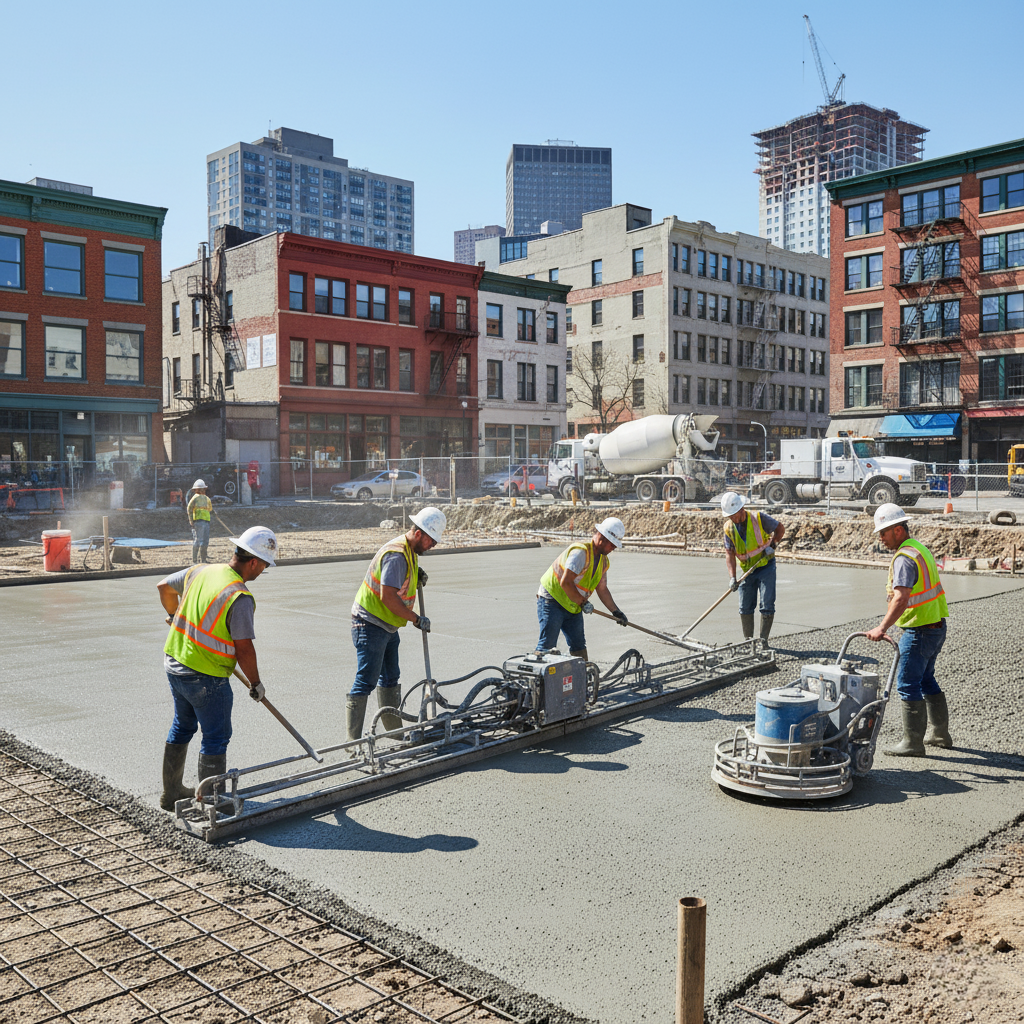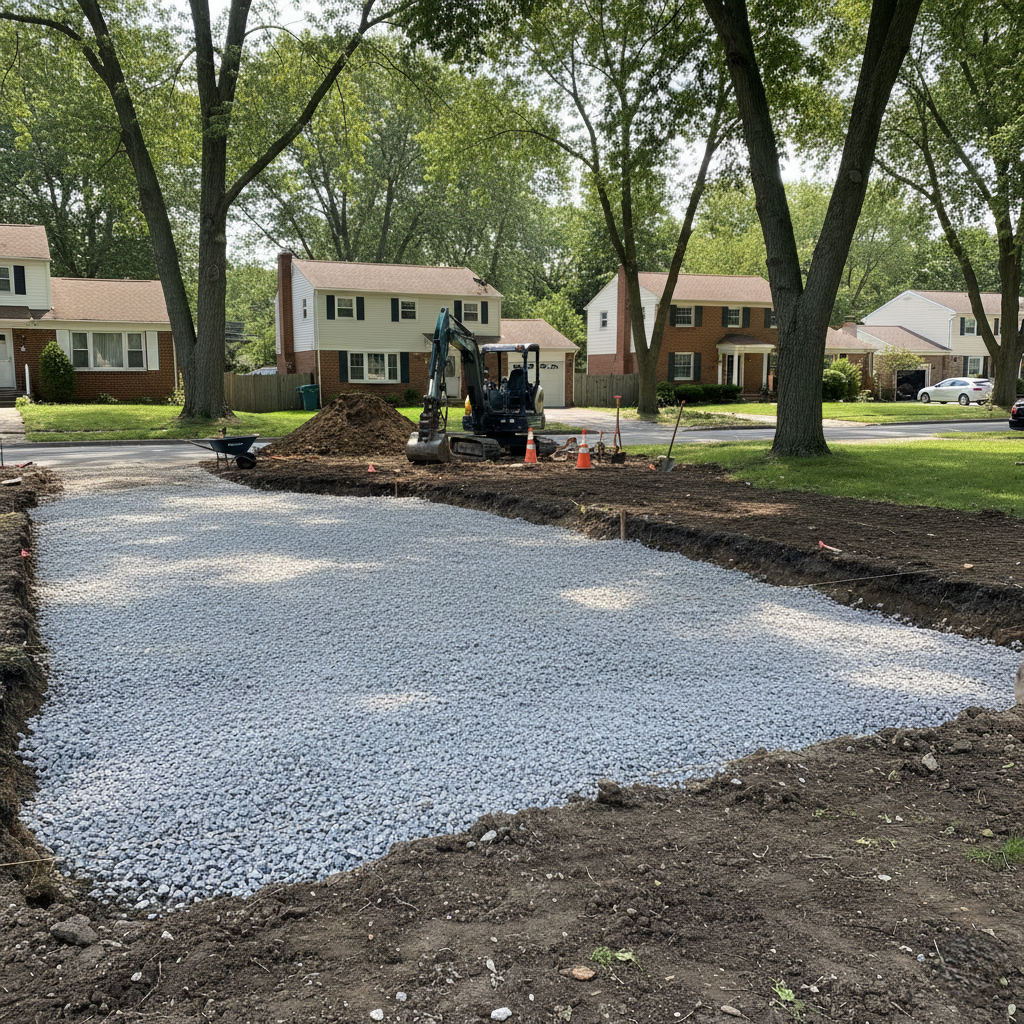
How to Prepare the Site Before Pouring Concrete in Union City, NJ
Pouring Concrete Union City
Proper site preparation forms the foundation of any successful concrete project in Union City, New Jersey. Local soil conditions, drainage requirements, and municipal regulations demand careful attention to detail during the preparatory phase. Professional contractors understand that quality preparation prevents future structural issues and ensures compliance with city building codes. Thorough excavation, grading, and base installation create optimal conditions for pouring concrete that will last decades. The dense urban environment and varied topography of Union City present unique challenges that require experienced handling and specialized techniques.

Understanding Union City Soil Conditions
Union City’s geological characteristics significantly influence site preparation requirements for concrete projects. The area features predominantly clay-rich soils near the Hudson River waterfront, transitioning to sandy loam compositions in higher elevations. These soil variations affect drainage patterns, compaction requirements, and excavation depth considerations. Properties closer to the Palisades may encounter rock formations that require specialized equipment for proper excavation.
Soil testing reveals critical information about bearing capacity and drainage characteristics essential for concrete work. Professional contractors conduct percolation tests to determine water infiltration rates and identify potential drainage issues. Areas with poor drainage require enhanced base preparation and possible installation of French drains or other water management systems.
Drainage and Water Management
Effective drainage planning prevents water accumulation that can undermine concrete foundations and cause settling issues. Union City’s elevation changes require careful grading to direct water flow away from concrete installations. Properties near Lincoln Park or along Boulevard East may need special consideration for stormwater management compliance.
Pre-Construction Site Assessment
Initial site evaluation identifies potential challenges and determines preparation requirements specific to each location. Contractors examine existing vegetation, utility locations, and soil composition to develop comprehensive preparation plans. The assessment includes measuring slopes, identifying high and low points, and determining optimal drainage patterns for the finished project.
Utility marking through New Jersey 811 services ensures safe excavation around underground infrastructure. Union City’s dense utility network requires precise coordination to avoid disruptions during site preparation. Contractors must allow 48-72 hours for utility marking before beginning any excavation work.
Permit Requirements and Inspections
Union City building regulations require permits for most concrete installations, particularly those affecting drainage patterns or public right-of-way areas. The permit process includes submitting detailed site plans showing proposed excavation depths and drainage modifications. Building officials conduct initial inspections to verify compliance with local codes before work begins.
Excavation and Site Clearing
Professional excavation begins with precise measurement and marking of the work area according to approved plans. Contractors remove existing vegetation, topsoil, and any organic matter that could decompose and cause settling. Excavation depth typically extends 6-8 inches below the finished concrete surface to accommodate base materials and proper drainage layers.
Mechanical excavation equipment suitable for Union City’s tight lot conditions includes compact excavators and skid loaders. These machines minimize damage to surrounding landscaping while providing necessary power for efficient soil removal. Hand excavation may be required near utilities or in areas with limited access.
Soil removal generates substantial amounts of material that must be properly disposed of according to local regulations. Contractors typically arrange for soil disposal at approved sites or coordinate with homeowners for redistribution on other areas of the property. Clean, non-contaminated soil may be suitable for other landscaping projects.
Slope and Grade Establishment
Proper grading ensures adequate drainage while meeting design specifications for the concrete installation. Slopes of 1-2% away from structures prevent water accumulation near foundations and building walls. Contractors use laser levels and transit equipment to achieve precise grade elevations throughout the work area.
Base Material Installation
Quality-based preparation provides essential support and drainage for concrete installations. The standard base consists of 4-6 inches of crushed stone or gravel, selected for optimal drainage and compaction characteristics. Materials meeting ASTM specifications ensure consistent performance and long-term stability under concrete loads.
Base material installation begins with spreading crushed stone evenly across the excavated area. Contractors use mechanical compactors to achieve proper density and eliminate voids that could cause settling. Multiple passes with plate compactors or vibratory rollers ensure uniform compaction throughout the base layer.
Sand leveling courses provide smooth, uniform surfaces for concrete placement. Fine sand spread over a compacted stone base creates ideal conditions for consistent concrete thickness and professional finishing. The sand layer typically measures 1-2 inches thick and requires careful screeding to maintain proper elevations.
Moisture Control and Vapor Barriers
Moisture management prevents concrete problems related to freeze-thaw cycles and groundwater infiltration. Vapor barriers installed between base materials and concrete reduce moisture migration that can cause cracking and surface deterioration. Plastic sheeting or specialized membrane materials provide effective moisture protection.
Formwork and Edge Preparation
Professional formwork creates precise edges and maintains proper concrete dimensions during pouring concrete operations. Contractors use lumber, steel, or plastic forms secured with stakes and bracing systems. Forms must remain rigid under concrete pressure while providing smooth, straight edges for the finished installation.
Form installation includes establishing proper elevations and slopes according to design specifications. String lines and laser levels ensure accurate form placement that meets both functional and aesthetic requirements. Corners and curves require special attention to achieve clean, professional appearances.
Release agents applied to form surfaces prevent concrete adhesion and allow easy removal after curing. Contractors use commercial form-release oils or other approved products that won’t stain or damage the finished concrete surface. Proper application ensures clean concrete edges without blemishes or form marks.
Reinforcement Placement
Steel reinforcement installation strengthens concrete and prevents cracking from temperature changes and structural loads. Wire mesh or rebar placement follows engineering specifications for the specific project requirements. Reinforcement positioning within the concrete section maximizes effectiveness while maintaining proper concrete cover.
Final Preparation Steps
Final preparation involves thorough cleaning and inspection of the prepared site before pouring concrete begins. Contractors remove all debris, excess water, and loose materials that could affect concrete quality. Surface preparation includes final grading adjustments and verification of all elevations and slopes.
Weather considerations play a crucial role in timing the concrete pour following site preparation. Extreme temperatures, precipitation, or high winds can affect concrete placement and finishing quality. Professional contractors monitor weather forecasts and adjust schedules accordingly to ensure optimal conditions.
Equipment staging and access planning facilitate efficient concrete delivery and placement. Contractors coordinate with ready-mix suppliers to ensure proper truck access while minimizing disruption to neighboring properties. Pump truck positioning and wheelbarrow routes receive careful planning for maximum efficiency during pouring concrete operations.
Quality Control and Inspection
Professional quality control measures verify that site preparation meets all specifications before concrete placement begins. Contractors conduct comprehensive inspections of excavation depth, base compaction, and form placement. These inspections identify any deficiencies that require correction before proceeding with the concrete pour.
Documentation of site preparation activities provides valuable records for warranty purposes and future reference. Photographs of key preparation stages demonstrate compliance with specifications and proper installation techniques. These records prove particularly important for resolving any future issues or warranty claims.
At Union City Concrete Works, we understand that exceptional concrete installations begin with meticulous site preparation. Our experienced team follows proven preparation protocols that ensure long-lasting, high-quality results for every project. We handle all aspects of site preparation, from initial assessment through final inspection, providing homeowners with confidence in their concrete investment.



